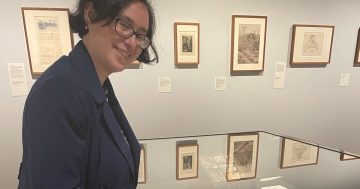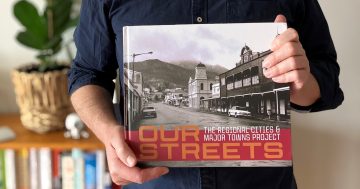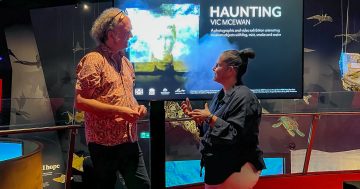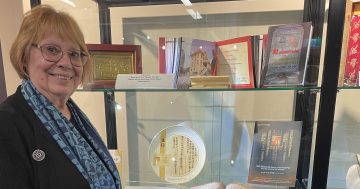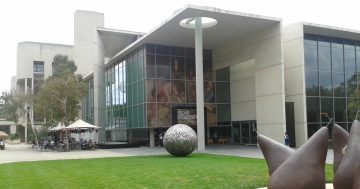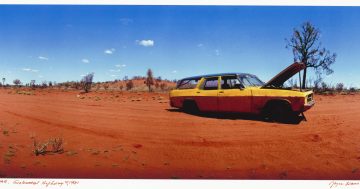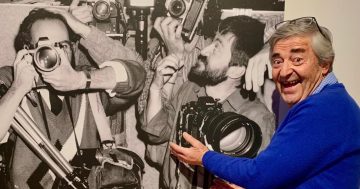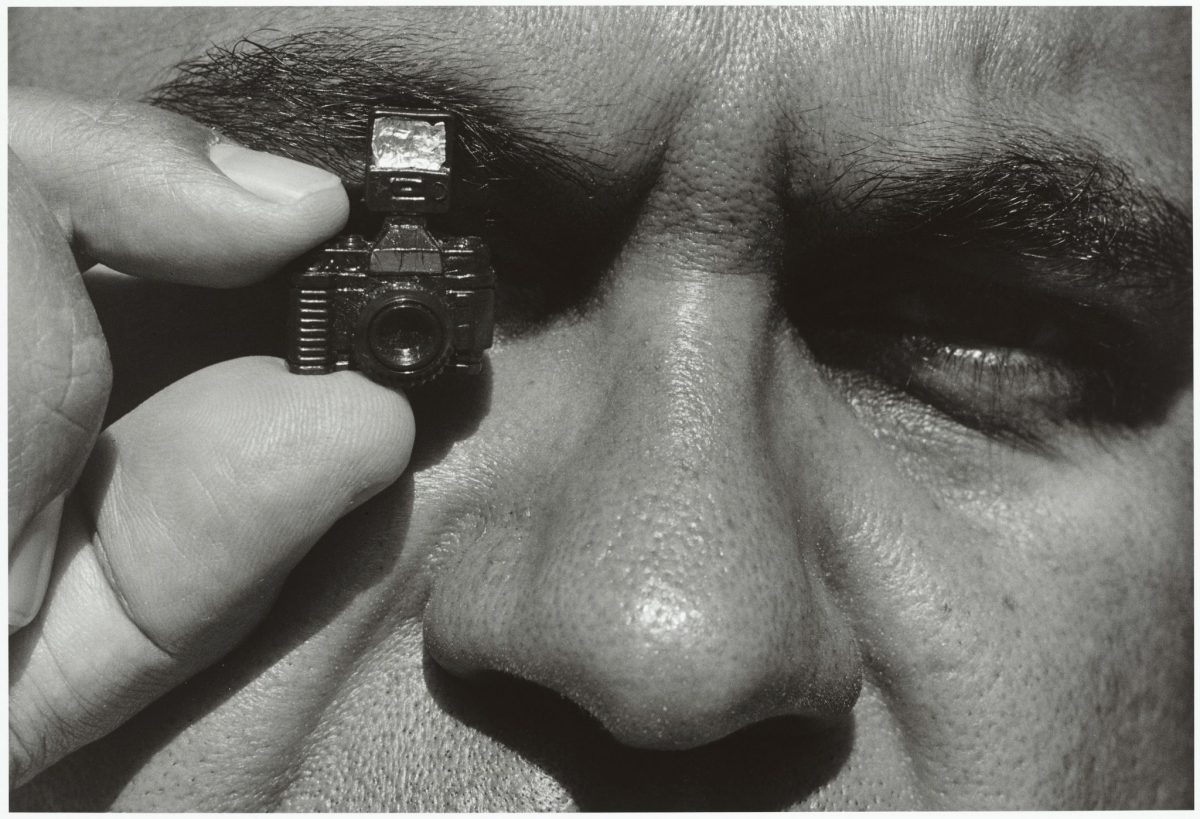
Self-portrait of Aboriginal photographer Mervyn Bishop, on show in the Viewfinder exhibition. Photo: Copyright courtesy of Mervyn Bishop and Josef Lebovic Gallery, Sydney. National Library of Australia.
Matt Jones knows what it’s like to curate an exhibition. It’s all about immersing yourself in the collection, researching possible pieces, making sure they’re digitised, and liaising with conservation staff to ensure each item can stand the rigours of being on display in a gallery for months.
He’s being doing it for many years as an exhibitions curator at the National Library of Australia. But not quite like this.
For Viewfinder: Photography from the 1970s to now, Matt hasn’t been able to bury himself deeply in the underground collection stacks of the National Library. Nor among the thousands of images in its Special Collections Reading Room, or even at his desk in the building by the lake.
No, Matt and his laptop braved the elements to curate the latest NLA exhibition from his dining room table at home – opting to select digitised images online.
The exhibition looks at how our nation has changed, as captured by many of the nation’s leading documentary photographers. Rennie Ellis, Mervyn Bishop, William Yang, Peter Dombrovskis and Jeff Carter are just a few of the names showcased in the exhibition, each telling their Australian story through the lens.
Matt said because he curated the exhibition during a national lockdown, things were more than a little different.
“It was a time of reflection for a lot of us then,” he said. “So the exhibition has taken on a little of that too.
“It says a lot about the climate today. To me, people seem to be in a more reflective mood so I wanted this exhibition to feed into that. I just hope people can see something in this exhibition that they can relate to. I want it to feel like it’s a photo album for them.”
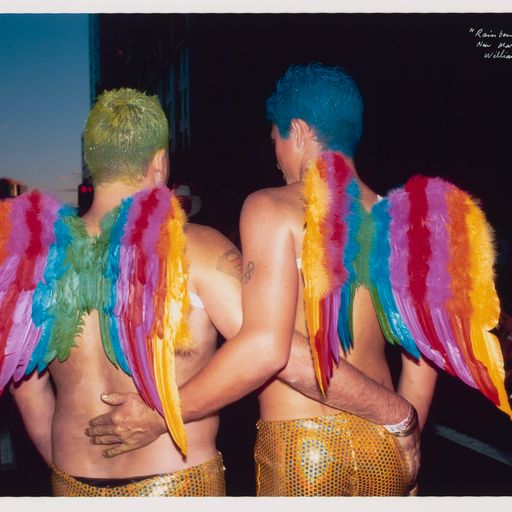
Rainbow Angel Wings, New Mardi Gras, 2003. Photo: Courtesy of William Yang. National Library of Australia.
Matt spent the first few months scoping the NLA photography collection, online.
With the total collection of about a million photos not all digitised, he searched through about 70,000 images. “That in itself showed me how important digitisation is to such a collection like this.”
Did curating the exhibition online rather than physically touching and seeing the photographs affect what Matt chose?
“I think it did,” he said. “I’ve never done it this way and I believe it had an effect on how the exhibition looks.
“This exhibition was special because of that but also because in other exhibitions I’ve curated, I’ve had to explain who the artist was to the audience. I’ve often thought how wonderful it would be to work on a show where the audience could recognise the faces or the times or places photographed.”
And the hardest thing about curating such an exhibition? “Cutting the images down to the 125 we could have in the show,” he said. “But it helped once I had themes.”
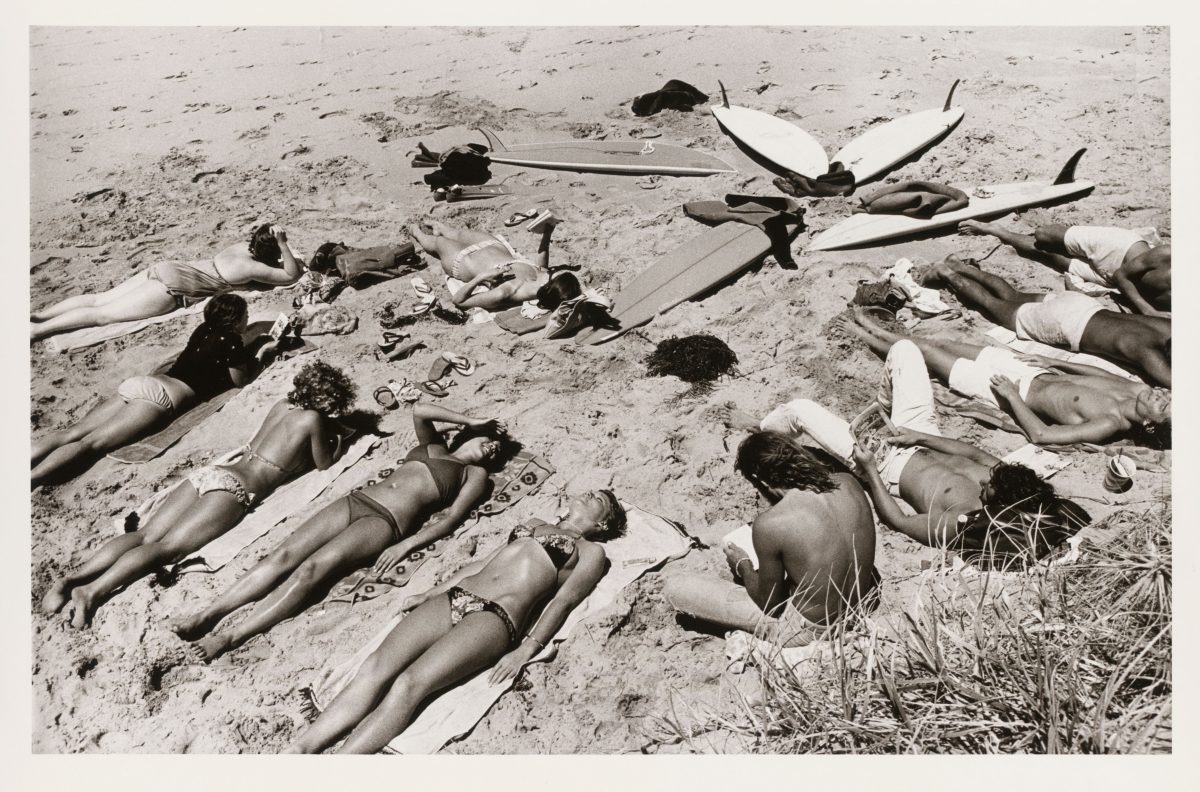
Surfer boys and girls on the beach at Lorne, 1975. Photo: Courtesy of the Rennie Ellis Photographic Archive. National Library of Australia.
They include People, Australia and the World, At Play, Natural Environment and Built Environment.
“I went for images that grabbed me – if they grabbed me, I hoped they’d grab the audience.
“Like the image of a takeaway shop with those coloured plastic fly strips in the doorway. Or the man in the ticket box – I mean, we’ve all seen that haven’t we?
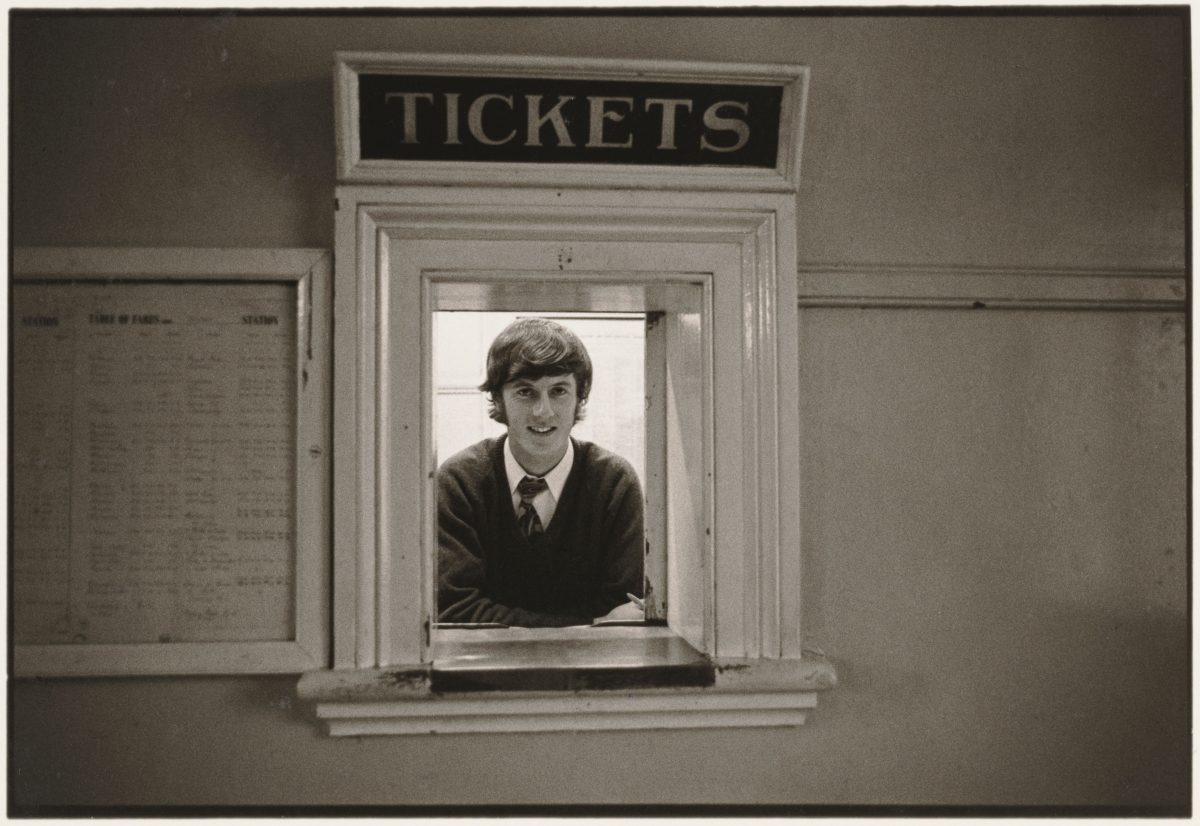
Paul Jackson, Dubbo, NSW, 1973. Photo: Courtesy of Jon Rhodes. National Library of Australia.
“Sometimes with photographs, you don’t have to see the place in the flesh, you can still appreciate it. Like those [Peter] Dombrovskis images of Tasmania. I’ve never been there but I know how important those pictures are.”
One in particular, Morning Mist, Rock Island Bend, was used in the campaign to successfully save the Franklin River in the late 1970s.
The images, from black and white studies to those bursting with light and colour, are curated to reveal a changing Australia. They range from surfers to knitters, dancers to miners, winged Mardi Gras angels to “that face” at the ticket window.
Viewfinder: Photography from the 1970s to now is open daily at the National Library of Australia, Canberra until 3 March 2023. Free admission.













